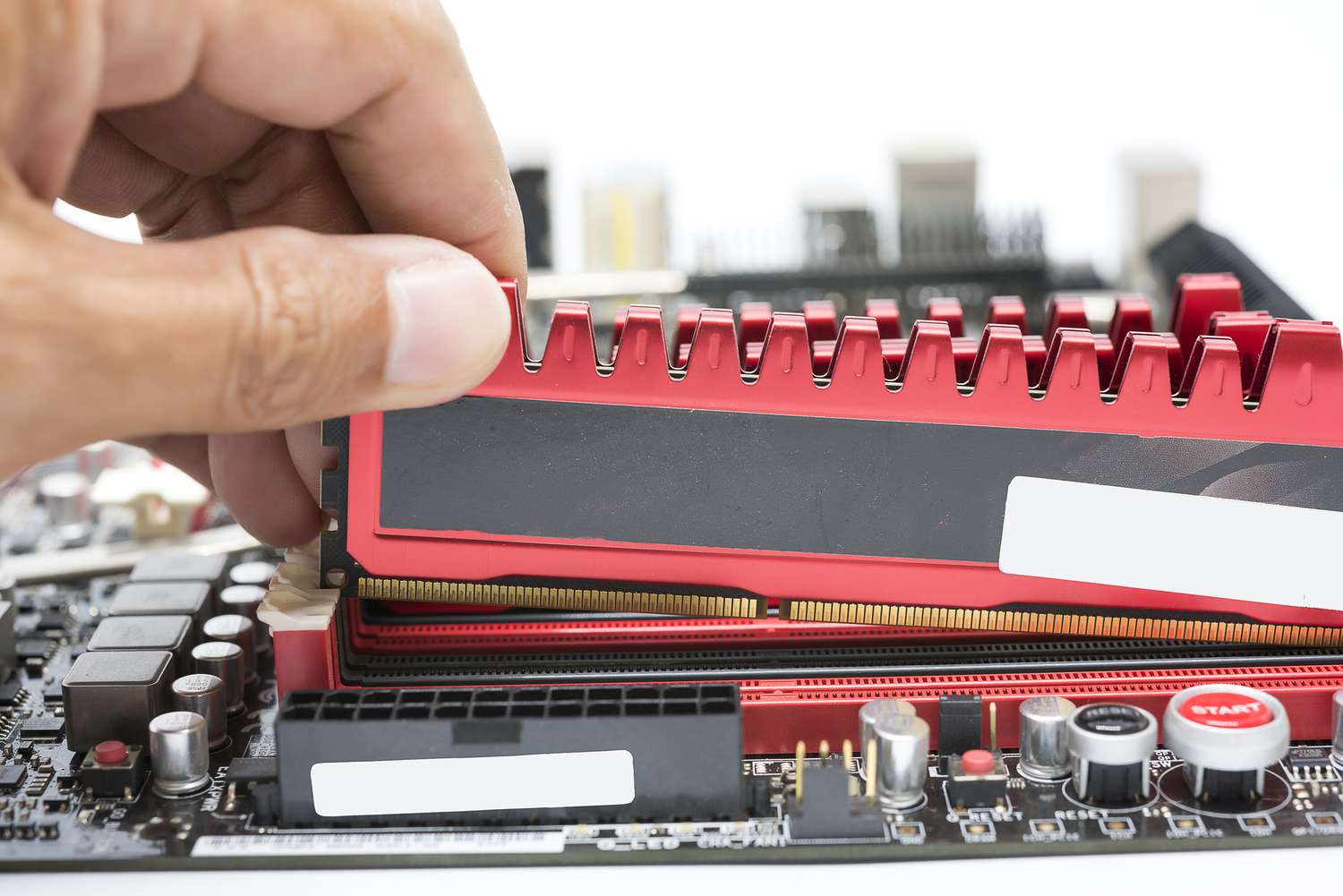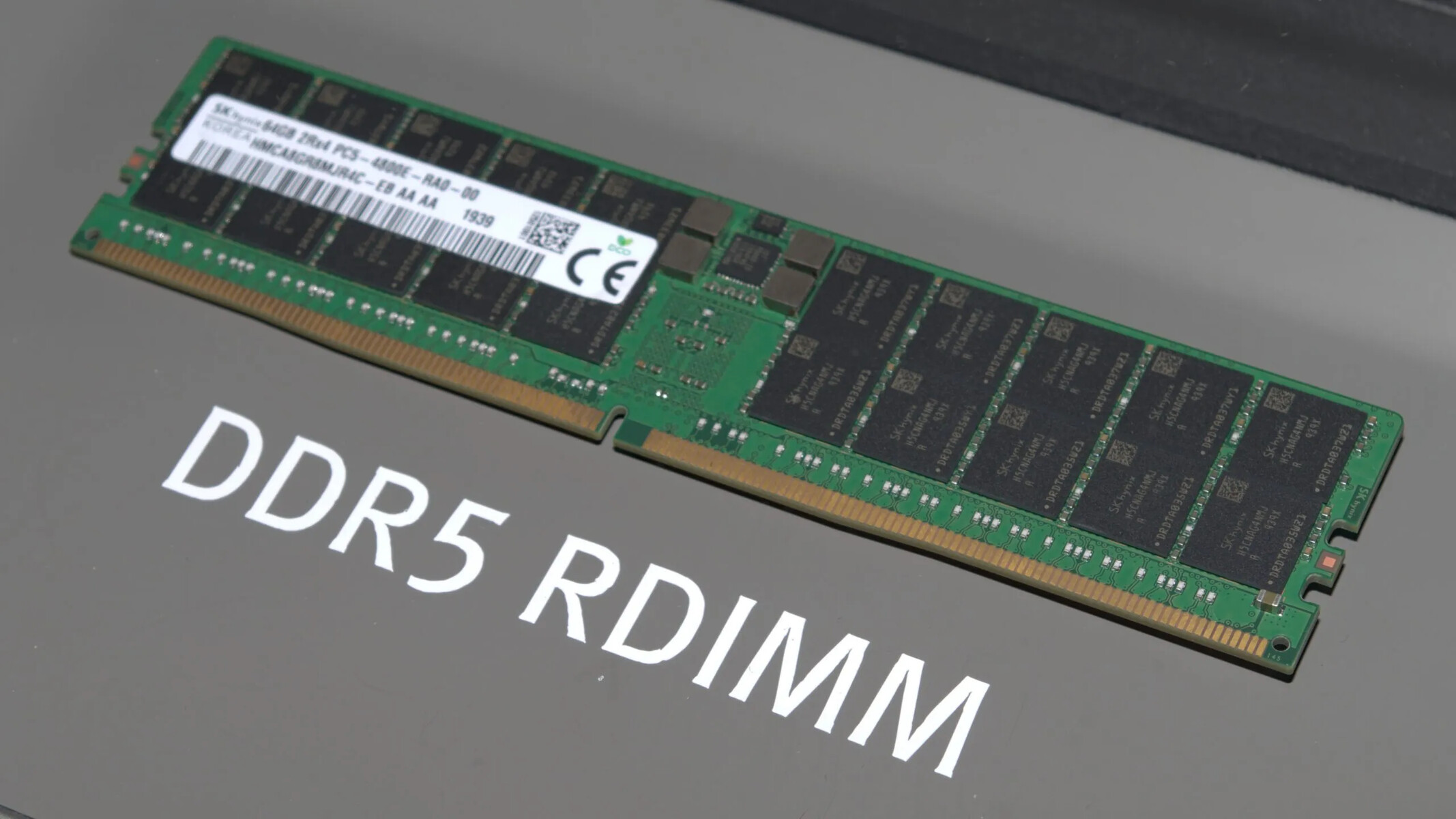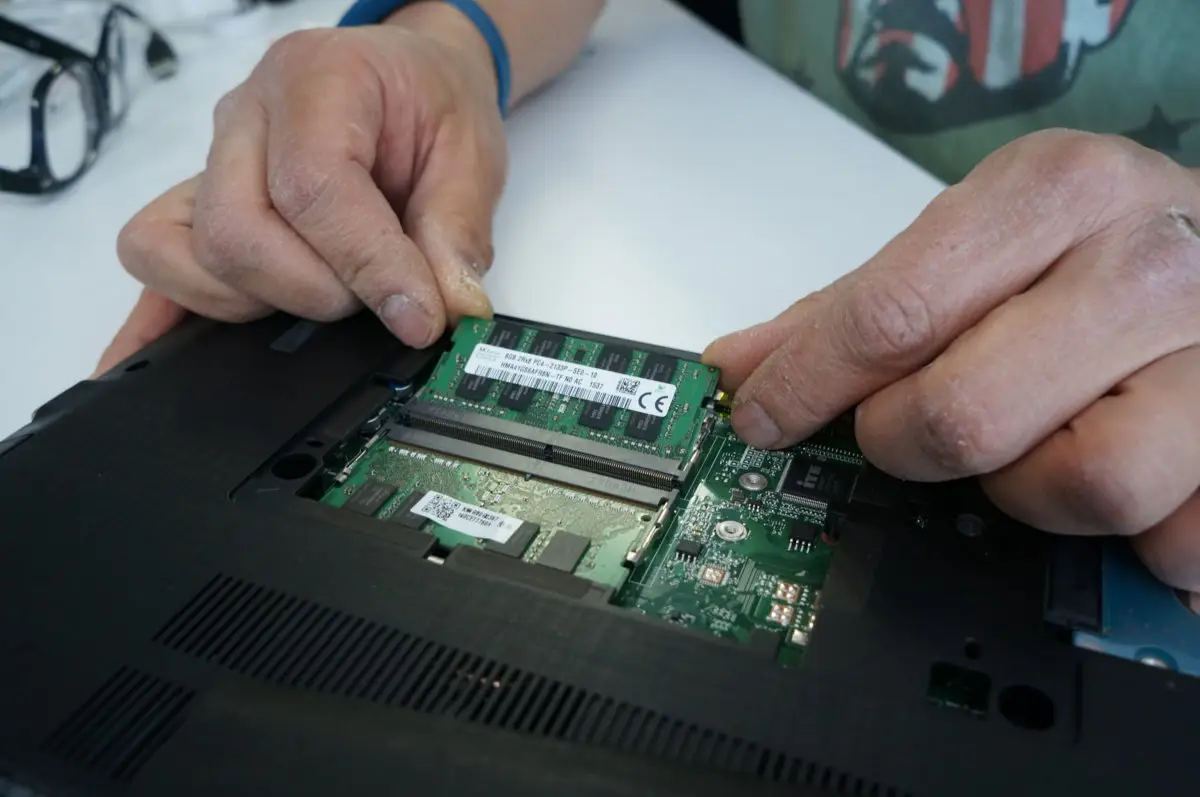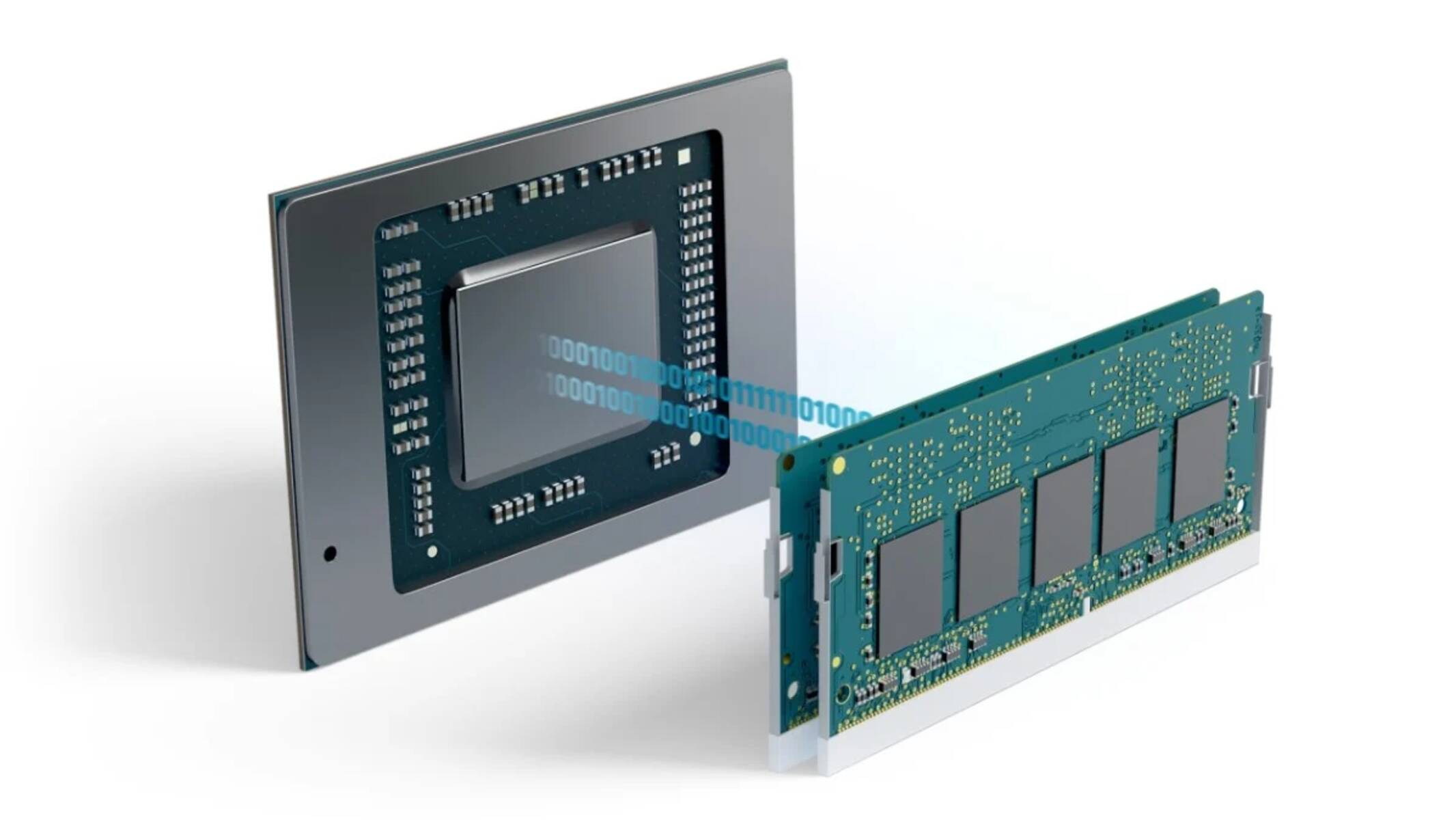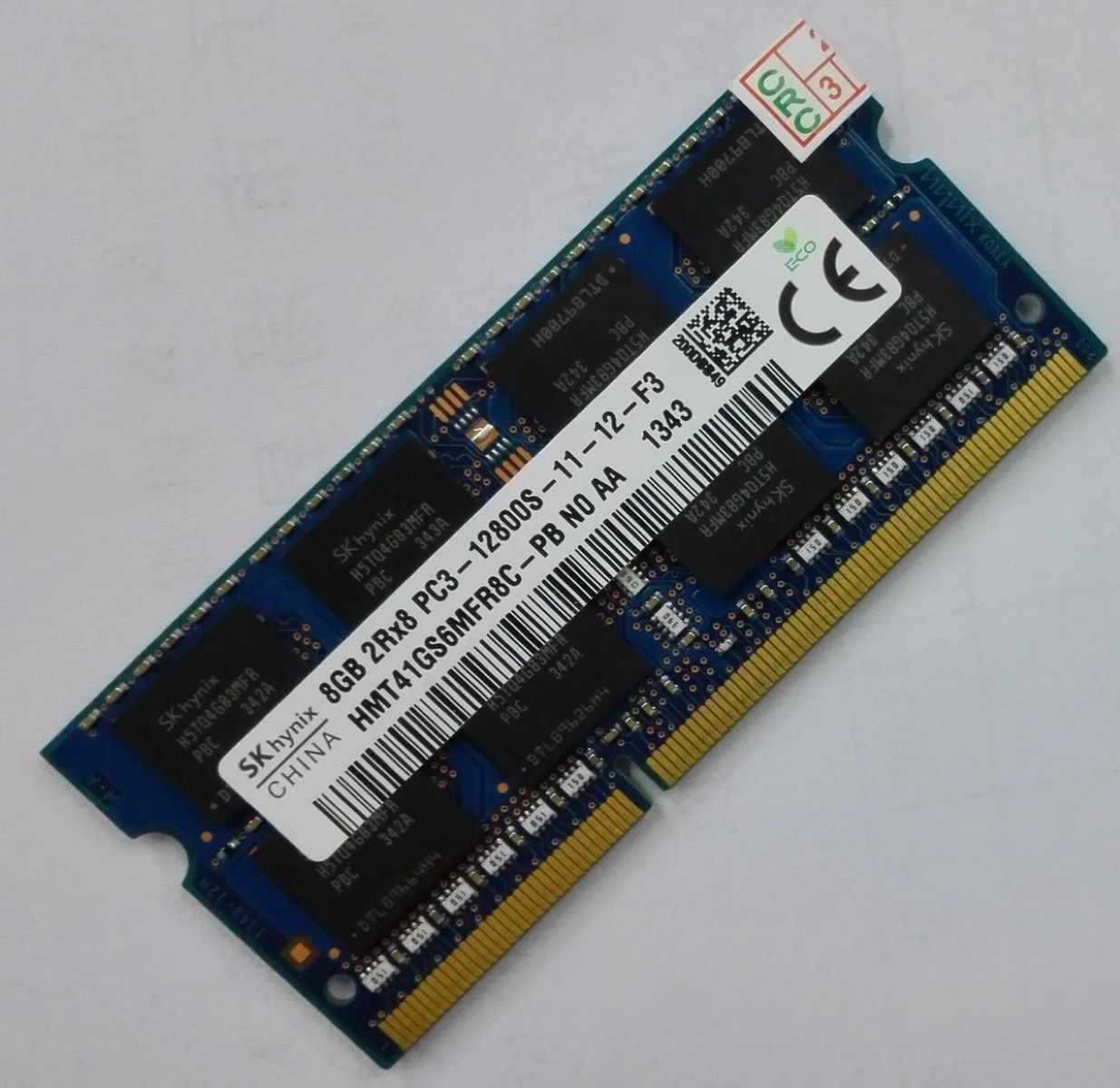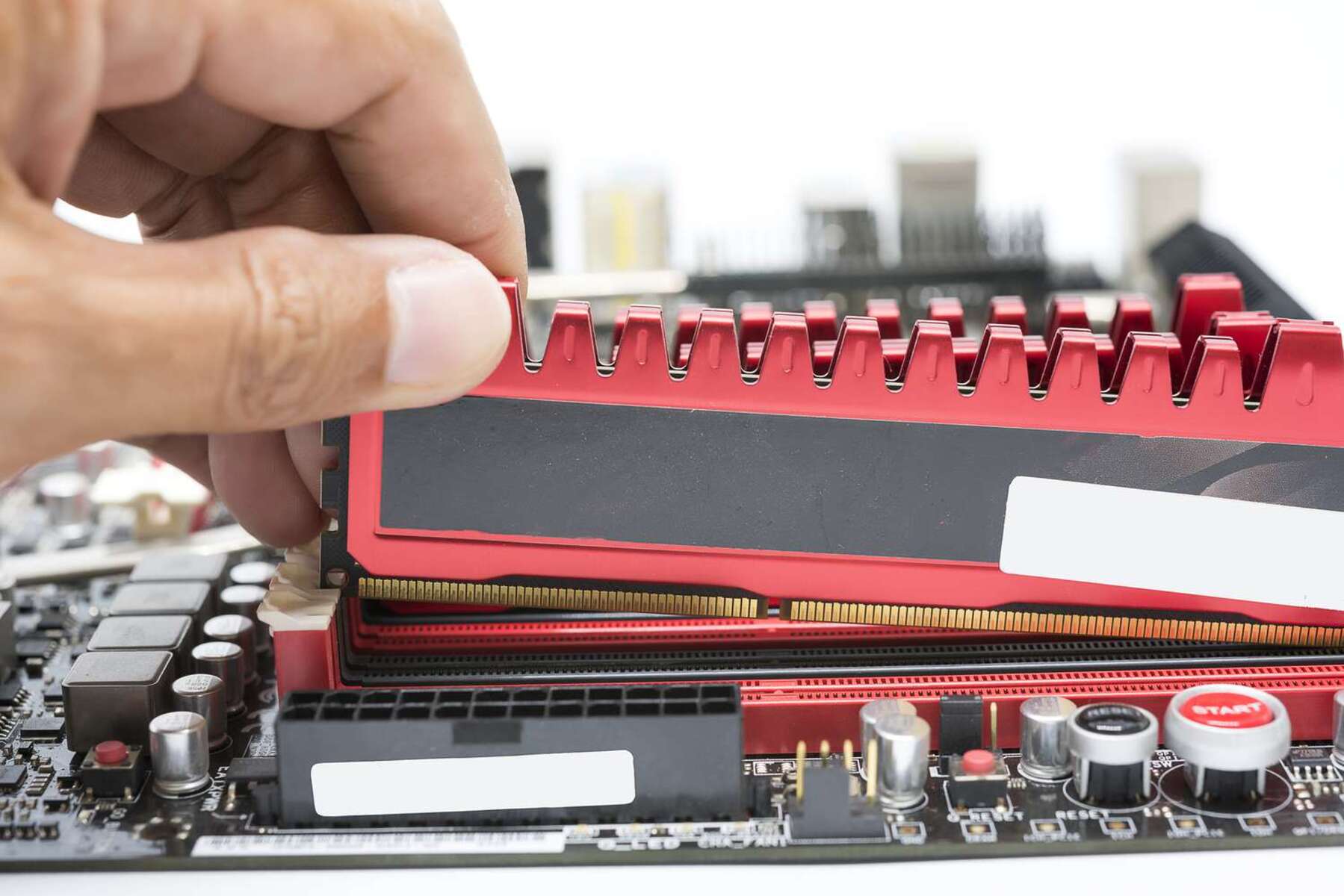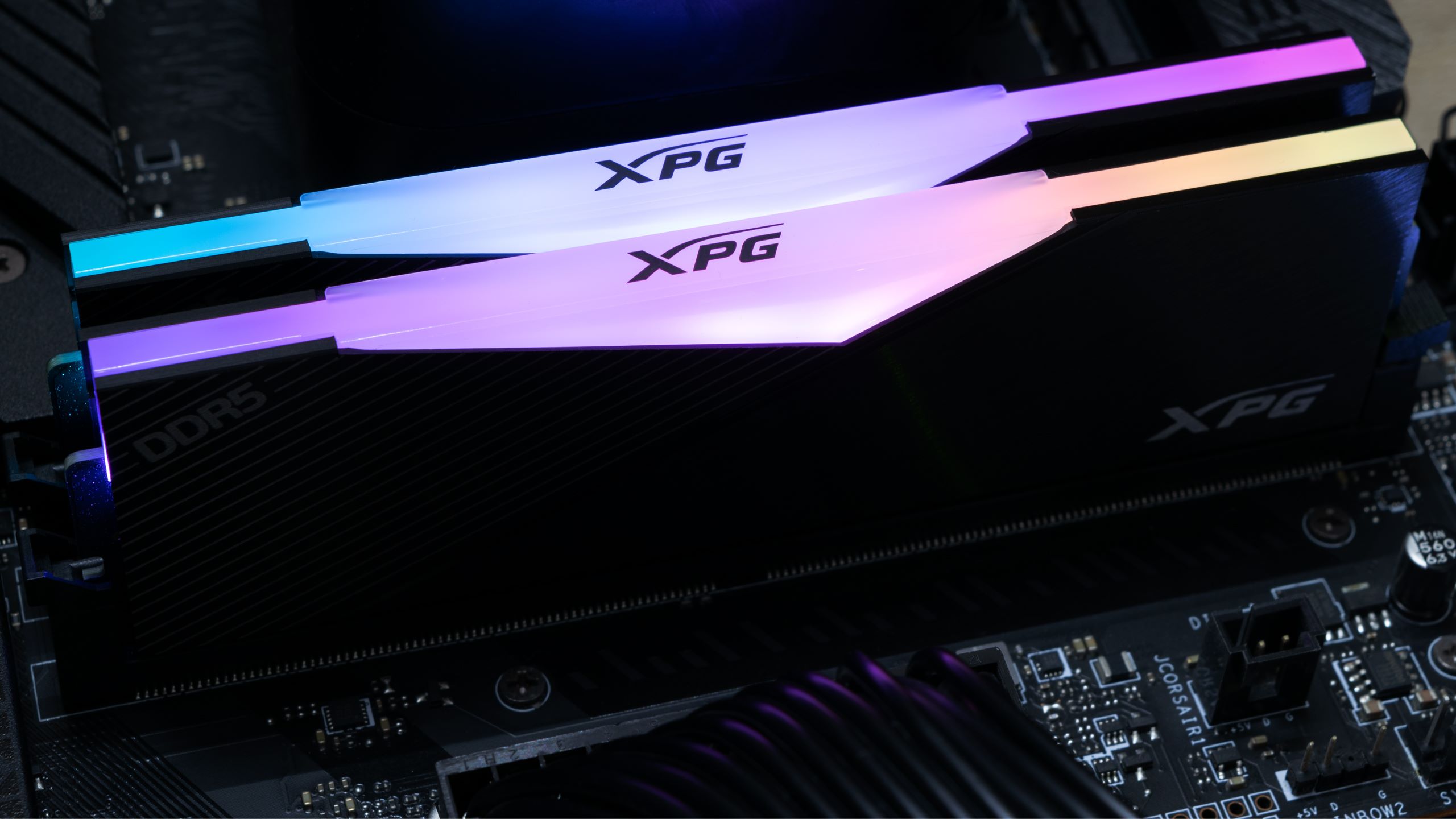Introduction
Welcome to this guide on how to determine the DDR version of your RAM. Whether you’re a computer enthusiast, a gamer, or simply curious about the specifications of your system, knowing the DDR (Double Data Rate) version of your RAM is essential in understanding its capabilities and compatibility. RAM, short for Random Access Memory, plays a critical role in the performance of your computer, affecting everything from multitasking abilities to the speed at which applications and files are accessed. In this article, we will explore the different types of RAM and provide step-by-step instructions on how to determine the DDR version of your RAM.
RAM is a form of computer memory that temporarily stores data that your computer needs to access quickly. It is a vital component that works alongside your computer’s processor to provide fast and efficient data storage. Over the years, advancements in technology have led to the development of different DDR versions of RAM, each offering increased data transfer rates and improved performance.
The different DDR versions include DDR, DDR2, DDR3, DDR4, and the most recent DDR5. Each version is not only physically different, but also has different capabilities and compatibility requirements. This is why it is important to determine the DDR version of your RAM, especially if you are planning to upgrade your system or troubleshoot any performance issues.
Now that we understand the importance of knowing the DDR version of your RAM, let’s dive into the various methods you can use to check the DDR version of your RAM. Whether you’re using a Windows or Mac system, there are several straightforward methods that will allow you to easily determine the DDR version of your RAM. By following the methods outlined in this guide, you will be able to identify your RAM’s DDR version with confidence, ensuring you have the right information to make informed decisions about your computer’s performance and compatibility.
What is RAM?
RAM, or Random Access Memory, is a crucial component in a computer system that stores data that is actively being used by the CPU (Central Processing Unit) to perform tasks. It provides fast and temporary storage for data that the CPU needs to access quickly, reducing the need to constantly retrieve information from the slower hard drive or solid-state drive (SSD).
When you open a program, launch a game, or browse the internet, data is loaded into the RAM for quick access, allowing the CPU to retrieve and process it rapidly. Think of RAM as a workspace where your computer can quickly shuffle data around, resulting in faster performance and smoother multitasking capabilities.
RAM works on the principle of read and write operations. When data is read from the RAM, it is quickly retrieved and sent to the CPU for processing. When data needs to be written, the CPU sends it back to the RAM, which can quickly store and hold the information until it is accessed again.
RAM is categorized into different types, such as Dynamic RAM (DRAM) and Static RAM (SRAM). DRAM is the most commonly used type in personal computers, laptops, and servers due to its cost-effectiveness and high storage capacity. SRAM is more expensive and often used in cache memory, which provides extremely fast access to frequently used data.
In addition to the different types, RAM is classified based on the DDR (Double Data Rate) version. DDR RAM is the most widely used type and has gone through several iterations, including DDR2, DDR3, DDR4, and the latest DDR5. Each DDR version improves upon the previous one, increasing data transfer speeds, capacity, and efficiency.
RAM is a critical component for overall system performance, as it directly impacts how fast your computer can access and process data. Having an adequate amount of RAM allows your computer to handle multiple applications and tasks simultaneously without experiencing lag or slowdowns. Insufficient RAM can lead to performance issues, including system freezes, excessive load times, and limited multitasking capabilities.
In summary, RAM is an essential part of any computer system, providing temporary storage for data that the CPU needs to access quickly. It plays a crucial role in determining the overall performance and multitasking capabilities of a computer. Understanding the basics of RAM and its different types and versions is important for optimizing your system’s performance and ensuring it meets your specific needs.
Different types of RAM
RAM, or Random Access Memory, comes in various types, each with its own specifications and capabilities. Understanding the different types of RAM can help you make informed decisions when upgrading or replacing memory modules in your computer system. Here are some of the most common types of RAM:
- SDRAM (Synchronous Dynamic RAM): SDRAM was the first type of RAM to synchronize with the computer’s bus speed, allowing for faster data transfer rates. It was widely used in computers from the late 1990s to the early 2000s.
- DDR (Double Data Rate) RAM: DDR RAM improved upon SDRAM by transferring data on both the rising and falling edges of the clock signal, effectively doubling the data transfer rate. The first generation of DDR RAM, DDR1, provided faster performance and higher bandwidth compared to SDRAM.
- DDR2 RAM: DDR2 RAM introduced further improvements in data transfer rates and efficiency. It operated at higher frequencies and consumed less power compared to DDR1. DDR2 RAM was widely used in computers from the mid-2000s to the late 2000s.
- DDR3 RAM: DDR3 RAM continued the trend of faster data transfer rates and lower power consumption. It featured higher clock speeds and improved performance compared to DDR2. DDR3 RAM became the mainstream choice for personal computers from the late 2000s to the mid-2010s.
- DDR4 RAM: DDR4 RAM offered even higher data transfer rates and lower power consumption compared to DDR3. It introduced new technologies and features to improve performance and efficiency. DDR4 RAM is still commonly used in modern computer systems and provides enhanced performance for gaming, content creation, and professional applications.
- DDR5 RAM: The latest generation of DDR RAM is DDR5. It brings significant advancements in data transfer rates, capacity, and power efficiency. DDR5 RAM is designed to meet the demands of high-performance computing and emerging technologies such as artificial intelligence and machine learning.
It’s important to note that each type of RAM has specific compatibility requirements. Motherboards are designed to support specific DDR versions, so it’s crucial to check your motherboard’s specifications when upgrading your RAM. Mixing different types of RAM or using incompatible RAM can lead to stability issues and performance degradation.
By understanding the different types of RAM and their characteristics, you can select the appropriate type for your needs, whether it’s upgrading your gaming rig, enhancing productivity, or powering resource-intensive applications. So, before purchasing new RAM modules, ensure compatibility with your motherboard and consider the requirements of your specific use case.
How to check the DDR version of your RAM
Knowing the DDR (Double Data Rate) version of your RAM is essential for determining its capabilities and compatibility with your computer system. Luckily, there are multiple methods you can use to check the DDR version of your RAM. Here are four common methods:
- Method 1: Checking through the System Information: On a Windows computer, you can access the System Information tool by pressing the Windows key + R, typing “msinfo32” in the Run dialog box, and pressing Enter. In the System Information window, navigate to the “Memory” section. Look for the “Type” or “Manufacturer” column, which will indicate the DDR version of your RAM. On a Mac, click the Apple menu, select “About This Mac,” and then click “System Report.” In the hardware section, under “Memory,” you will find information about the DDR version of your RAM.
- Method 2: Checking through Task Manager: On a Windows computer, you can use the Task Manager to check the DDR version of your RAM. Press Ctrl + Shift + Esc to open Task Manager, and click on the “Performance” tab. Under the “Memory” section, look for the “Speed” column, which will display the DDR version and frequency of your RAM.
- Method 3: Checking through CPU-Z: CPU-Z is a popular third-party software that provides detailed information about your computer’s hardware. Download and install CPU-Z from the official website, and launch the program. Under the “Memory” tab, you will find information about the DDR version, size, frequency, and other details of your RAM.
- Method 4: Checking through BIOS/UEFI: Restart your computer and access the BIOS or UEFI settings. The key to enter the BIOS/UEFI varies depending on your system manufacturer, but it is commonly the F2 or Delete key. Once in the BIOS/UEFI settings, navigate to the memory settings or system information section. Look for the DDR version or specifications, which will provide you with the details about your RAM.
These methods work on most modern computer systems, whether you’re using a Windows PC, Mac, or Linux machine. By using one or more of these methods, you can easily determine the DDR version of your RAM and ensure its compatibility when upgrading or troubleshooting your computer system.
Remember to refer to the documentation of your specific computer or motherboard to explore additional methods or to clarify any differences in accessing and checking RAM details. Having accurate information about your DDR version will help you make informed decisions for optimizing your system’s performance and compatibility.
Method 1: Checking through the System Information
One of the easiest ways to check the DDR version of your RAM is by using the built-in System Information tool on your computer. This method works for Windows systems. Here’s how to do it:
- Press the Windows key + R on your keyboard to open the Run dialog box.
- Type “msinfo32” in the Run dialog box and hit Enter.
- The System Information window will open, displaying various details about your computer’s hardware and software.
- In the System Information window, locate and select the “Memory” option in the left pane. This will display information about the RAM installed on your system.
- Look for the “Type” or “Manufacturer” column in the right pane of the System Information window.
- Under the “Type” or “Manufacturer” column, you will see the DDR version of your RAM indicated (e.g., DDR4, DDR3, etc.).
By following these steps, you can quickly and easily determine the DDR version of your RAM using the System Information tool. It provides a straightforward and built-in solution for checking your RAM’s DDR version without the need for any additional software or tools.
Keep in mind that the exact names of the columns or information might vary slightly depending on the version of Windows you are using. However, the overall process should remain the same.
Once you have identified the DDR version of your RAM through the System Information tool, you can use this valuable information when upgrading or troubleshooting your computer system. Whether you’re looking to increase your RAM capacity or ensure compatibility with other components, knowing the DDR version is crucial for making informed decisions.
Now that you’ve learned how to check the DDR version of your RAM through the System Information tool, you can move on to the other methods described in this article to validate your findings and cross-reference the information obtained. This will ensure accuracy and provide a comprehensive understanding of your RAM’s specifications.
Method 2: Checking through Task Manager
If you’re using a Windows computer, another convenient method to check the DDR version of your RAM is through the Task Manager. Task Manager provides a quick and accessible way to view essential system information, including details about your computer’s memory. Here’s how you can do it:
- On your keyboard, press Ctrl + Shift + Esc to open the Task Manager.
- In the Task Manager window, click on the “Performance” tab at the top.
- Under the “Performance” tab, you will see various performance-related information.
- Look for the “Memory” section, which displays details about your computer’s RAM.
- In the “Memory” section, you will find the “Speed” column, which indicates the DDR version and speed of your RAM.
The “Speed” column will typically display the DDR version along with the frequency (in megahertz) at which your RAM is running. It might appear as “DDR4-3200,” for example, indicating that you have DDR4 RAM running at a frequency of 3200 MHz.
Using Task Manager to check the DDR version of your RAM is a simple and effective method. It allows you to access the information directly from the Windows operating system, without the need for any additional tools or software.
Note that Task Manager provides real-time information about the current state of your computer’s memory. Therefore, if you have recently upgraded or replaced your RAM, ensure that the Task Manager reflects the latest changes.
By following these steps, you can quickly determine the DDR version of your RAM through the Task Manager. This knowledge is valuable when troubleshooting performance issues, checking compatibility, or planning for future upgrades.
Remember that Task Manager is specific to Windows systems, and the version and layout might vary slightly depending on the Windows version you are using. However, the basic steps outlined here should remain consistent across most Windows operating systems.
Now that you are familiar with this simple method, feel free to explore other methods described in this article to cross-verify the DDR version of your RAM and ensure accurate information for your system.
Method 3: Checking through CPU-Z
If you’re looking for a comprehensive and detailed way to check the DDR version of your RAM, using the CPU-Z software is a highly recommended method. CPU-Z is a popular third-party program that provides in-depth information about various hardware components of your computer. Here’s how you can use CPU-Z to check the DDR version of your RAM:
- Visit the official CPU-Z website (https://www.cpuid.com/) and download the latest version of CPU-Z.
- Install CPU-Z on your computer by following the on-screen instructions.
- Launch CPU-Z once the installation is complete.
- After launching CPU-Z, it will display detailed information about your computer’s hardware.
- Click on the “Memory” tab to view information specifically related to your computer’s RAM.
- In the “Memory” tab, you will find details such as the DDR version, frequency, size, and timings of your RAM.
- Look for the “Type” field, which indicates the DDR version of your RAM (e.g., DDR4, DDR3, etc.).
CPU-Z provides comprehensive information about your RAM, including the DDR version, frequency, and other technical details that can be helpful when upgrading or troubleshooting your system. The software is widely trusted and used by professionals and enthusiasts alike due to its accuracy and reliability.
By using CPU-Z to check the DDR version of your RAM, you can have an in-depth understanding of your system’s memory specifications. This knowledge is invaluable when considering RAM upgrades, assessing compatibility, or optimizing performance.
It’s worth noting that CPU-Z is available for Windows systems, but there are also alternative programs available for other operating systems. These programs, similar to CPU-Z, provide detailed hardware information and can help you check the DDR version of your RAM.
Now that you know how to use CPU-Z to determine the DDR version of your RAM, feel free to explore other methods described in this article to cross-reference the information and ensure accuracy before making any decisions related to upgrading or troubleshooting your computer’s memory.
Method 4: Checking through BIOS/UEFI
Another method to check the DDR version of your RAM is by accessing the BIOS (Basic Input/Output System) or UEFI (Unified Extensible Firmware Interface) settings of your computer. The BIOS/UEFI provides low-level control and configuration options for your system’s hardware, including your RAM. Here’s how you can check the DDR version of your RAM through the BIOS/UEFI:
- Restart your computer.
- During the startup process, look for the key or combination of keys to access the BIOS/UEFI settings. This key varies depending on the manufacturer of your computer or motherboard. Common keys include F2, Delete, F12, or Esc.
- Once you enter the BIOS/UEFI settings, navigate to the memory settings or system information section. The exact location and naming might differ depending on your system’s BIOS/UEFI implementation.
- Look for the DDR version or specifications related to your RAM.
- The BIOS/UEFI will typically display information such as the DDR version, frequency, timings, and other relevant details about your RAM.
The BIOS/UEFI method provides direct and accurate information about your RAM’s DDR version, as it accesses the hardware-level information stored in the system. This method can be particularly useful if you want to validate the DDR version obtained through other software-based methods or if you’re unable to access the operating system itself.
It’s important to note that the BIOS/UEFI interface can vary significantly depending on the manufacturer and version of your computer or motherboard. Therefore, it’s recommended to consult the documentation or support resources provided by the manufacturer to locate the specific settings related to memory information.
By using the BIOS/UEFI method to check the DDR version of your RAM, you can ensure accurate and reliable information, which is crucial for making informed decisions when upgrading or troubleshooting your computer’s memory.
Now that you are familiar with this method, along with other methods described in this article, you can cross-reference the information obtained and have a comprehensive understanding of your RAM’s DDR version and other related specifications.
Conclusion
Checking the DDR version of your RAM is an important step in understanding its capabilities and ensuring compatibility with your computer system. Whether you’re planning to upgrade your RAM, troubleshoot performance issues, or optimize your system, knowing the DDR version provides valuable information for making informed decisions.
In this article, we explored four different methods for checking the DDR version of your RAM. By using the System Information tool, Task Manager, CPU-Z software, or accessing the BIOS/UEFI settings, you can easily determine the DDR version and other relevant details of your RAM.
Each method offers its own advantages and may be preferred based on your specific requirements. The System Information tool and Task Manager provide quick and accessible ways to check the DDR version directly from the operating system. CPU-Z, on the other hand, provides in-depth information about your RAM, including additional technical details. The BIOS/UEFI method allows you to retrieve hardware-level information and validate the DDR version directly from the system’s firmware.
By using one or more of these methods, you can confidently identify the DDR version of your RAM and ensure its compatibility with other components or future upgrades. This knowledge empowers you to make informed decisions regarding your computer’s performance and memory requirements.
Remember to consult the documentation or support resources for your specific computer or motherboard to ensure accurate access to the RAM-related information. Additionally, it’s important to cross-reference the DDR version obtained through multiple methods to ensure consistency and accuracy.
Now that you have learned how to check the DDR version of your RAM, you can proceed with upgrading your RAM, troubleshooting performance issues, or optimizing your system’s memory based on your specific needs and requirements.







